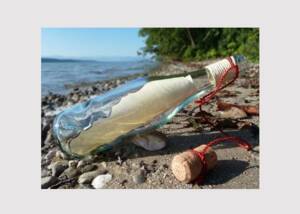Abrasive paper - It all depends on the grain size
News News blog
Abrasive paper (also known as sandpaper, glass paper or emery paper) is used to smooth rough surfaces or to break edges. It is also suitable for larger material removal.

On 14 June 1834, Isaac Fisher Jr. from the USA was granted US patents number 8,246 and 8,247 on the manufacturing process of abrasive paper. In Germany, Carl Friedrich Schröder in Münden finally started the industrial production of coated abrasives in 1863.
Abrasive paper is available in different grit sizes. The number of the grit is usually indicated on the back. The larger the number, the finer the grit. Depending on the application, you can choose the appropriate grit.
The number of grains on the sandpaper determines the scattering density:
- Dense scattering; the backing is almost completely covered with abrasive grit and is mainly used in metalworking.
- Semi-open grit: The backing is about 70-80 % coated with grit and is suitable for sanding hardwood, non-ferrous metals, plastics and lacquers.
- Open grit: The backing is about 50-70% coated with abrasive grit and is suitable for sanding softwood and other long-chipping, sticky or soft materials.










